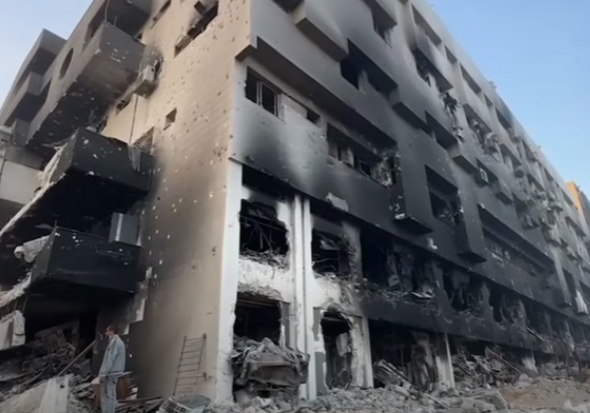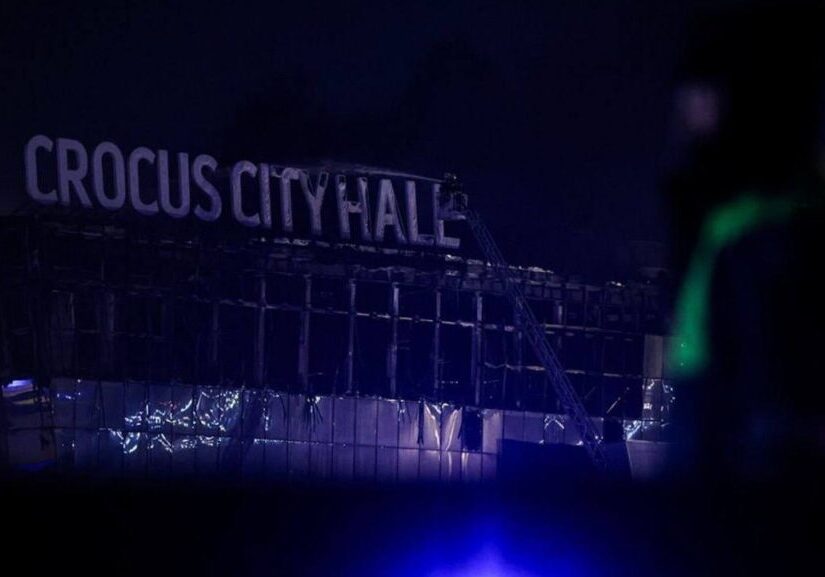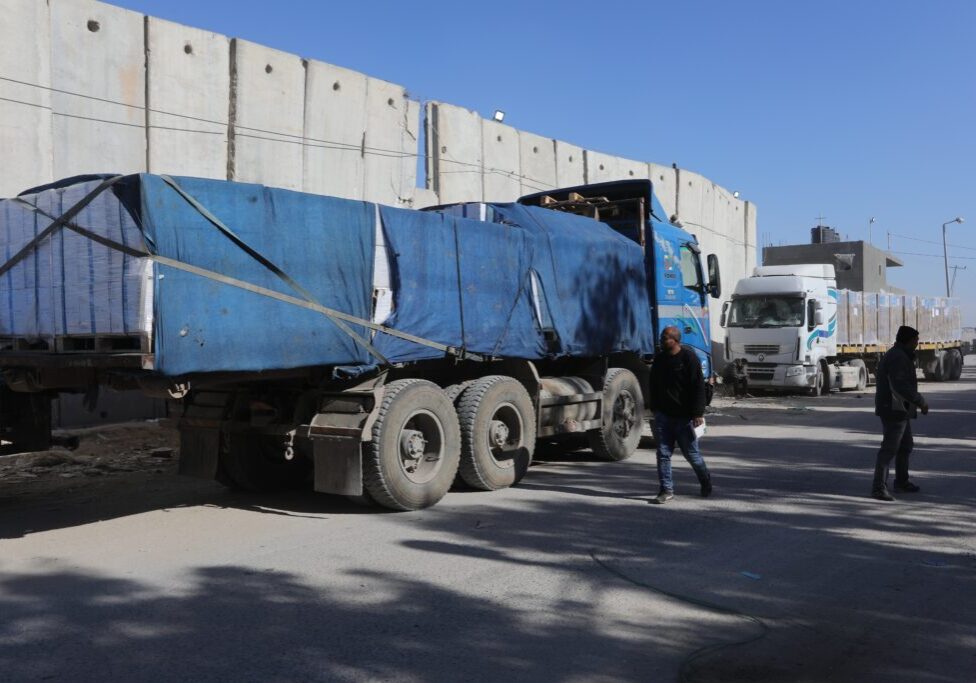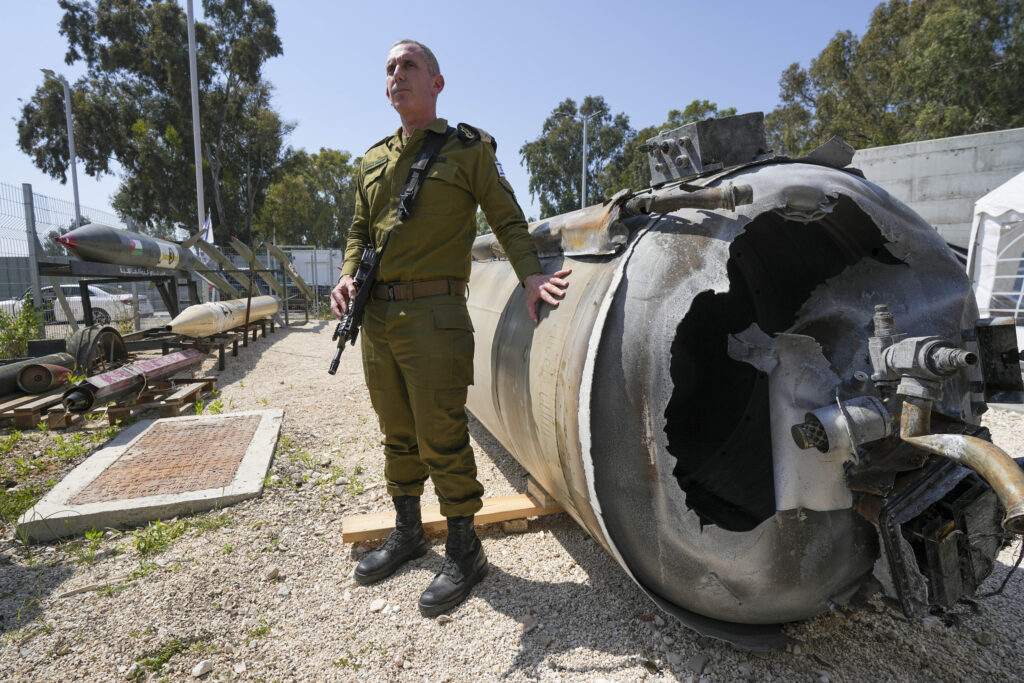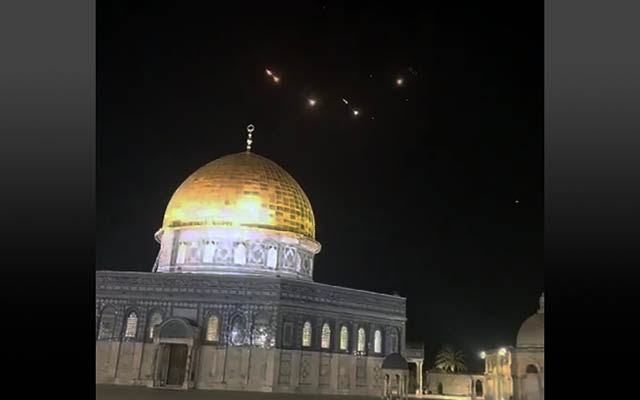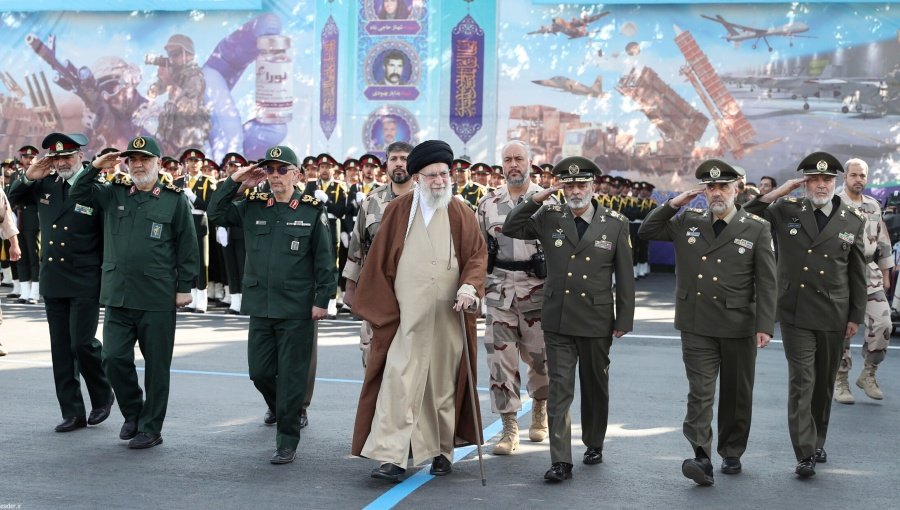FRESH AIR
What we know about the major Israeli-Iranian exchange of fire in and around Syria overnight
May 10, 2018 | AIJAC staff

According to the Israeli military sources, in the early hours of Thursday (May 10), the Al-Quds forces of the Iranian Revolutionary Guard Corps (IRGC) fired around 20 rockets from inside Syria at Israeli targets. The Iranians used MLRS (multiple launch rocket systems), possibly the Fajr 5, of either Iranian or Russian make.
Subsequent reports have said the rockets may have been fired by Shi’ite militia and Hezbollah terrorists under direct orders from the Al-Quds IRGC force, possibly not IRGC forces themselves.
The launches were in three rounds of six to eight rockets each time in two or three separate barrages. According to the Hezbollah-affiliated, Arab-language TV station Al-Mayadeen, the rockets targeted IDF Unit 810 in charge of Mount Hermon, an alpine unit base that is also on Mount Hermon, army observation posts, electronic warfare and communication intelligence bases and a helicopter pad.
According to reports, no Israelis were hurt in the attack, and Israel’s Iron Dome air defence system shot down four of the incoming rockets. Israel also now says none of the others landed in Israeli territory.
The IDF responded very strongly, hitting a long list of Iranian targets deep inside Syria with airstrikes, in what Israeli officials defined as the largest in scale “since it signed on a disengagement agreement with Syria in May 1974”.
The IDF spokesperson released a statement after the attack naming the targets – Iranian intelligence sites and systems operated by the Al-Quds force, Al-Quds logistic and military headquarters, as well as a weapons depot belonging to the Al-Quds forces within the Damascus international airport; an Iranian military base north of Damascus. The Iranian missiles launcher from which the rockets were launched at Israel was also destroyed, according to the IDF.
Arabic media reports claim that destroyed in the attack were a Syrian radar station, two Damascus airports, an area next to a Hezbollah base, possibly the base itself, and a Revolutionary Guard headquarters at Al-Sayda Al-Zayneb in Damascus. In addition, reports said, Syrian Army positions and Iranian and Hezbollah militias in the Syrian Golan, close to the border with Israel, were attacked. Some rebel forces used the attack to try and gain ground in their fight against the Bashar al-Assad’s regime launching operations against the Syrian army near the border with Israel.
Background to these events
This latest attack by Iran was a major escalation in the unfolding direct conflict between Israel and Iran, being played out in Syria.
For the first time since 1973, the relatively peaceful Golan Heights could be on the verge of war, this time with Iran. Since the Second Lebanese War in 2006, Israel has been waging an ongoing low-intensity war against several forces, including Hamas and the Islamic Jihad in Gaza, ISIS operatives inside Israel and in the Palestinian Territories and several isolated incidents with Hezbollah in Lebanon. Yet, Israel has avoided all-out war, and has not been in a battle with an enemy nation-state.
Iranian forces started to arrive in Syria on a large scale in 2015 as part of the coordinated attempt to save Bashar Al-Assad’s regime at a time when various rebel forces seemed to be getting an upper hand in Syria’s civil war.
Israel has been sending clear warning messages over the last few years that it would not tolerate a threatening Iranian presence in Syria close to its border. Yet, Iran kept pushing into Syria in an attempt to forge an overland corridor under its control linking Teheran with the Mediterranean Sea, and passing through Shi’ite areas in Iraq, eastern and southern Syria and Lebanon, which is now almost under complete control of Iran’s proxy, Hezbollah. Moreover, Iran has openly been building and planning for land, air and naval bases for its forces in Syria that are plainly intended to remain after the Syria civil war ends.
Until Iran’s involvement, Israel attempted to stay out of the Syrian conflict, limiting its engagement to humanitarian assistance and a few covert attacks on alleged shipments of advanced weapons being transferred to Hezbollah.
Occasionally sporadic and unintentional fire from Syria fell inside Israel, provoking responses by the IDF, mostly in the form of return artillery fire. However, military altercations were limited and contained.
The entry of substantial Iranian forces and pro-Iranian Shi’ite milities who travelled from Iraq, Afghanistan and elsewhere into Syria has effectively dragged Israel into the civil war across the border.
More dangerously, over the past few months, it has become apparent a direct confrontation between Israel and Iran was brewing. The first major escalation was on February 10 this year. From a base near Homs, Iranian forces sent a military drone carrying an explosive device into Israel. That attempt to attack Israel was foiled when the Israeli Air Force shot down the drone as soon as it entered Israeli airspace. Subsequent retaliatory Israeli attacks in Syria saw the loss of an Israeli F-16 to Syrian anti-aircraft fire.
Since then, Israel has engaged in a series of precision attacks on Iranian forces operating inside Syria. Amid Russian presence and some anti-aircraft systems on the ground, Israel attacked Iranian military assets within Syrian border multiple times. During these attacks several Iranian soldiers and consultants were killed. Teheran vowed in return that it would not stand idle and would avenge the deaths and the destruction of facilities it was maintaining in Syria.
Continuing in the background, is the nuclear issue. The decision taken by US President Donald Trump to withdraw from the nuclear deal with Iran was likely another catalyst for the most recent Iranian missile attack.
The Iranian leadership responded to Trump’s decision with anger, with Iran’s leaders viewing the agreement as an achievement that it wants to preserve, a possible pathway towards reviving its ailing economy and most important, a pathway for resumption of its activity to acquire an atomic bomb.
The theft of Iran’s secret nuclear archive in a bold Mossad operation in January was further insult from an Iranian point of view. Disclosed just a few days before Trump’s withdrawal announcement by Israeli Prime Minister Benjamin Netanyahu in a media presentation, the vast amount of material proves beyond doubt that Iran lied when it claimed it did not seek nuclear weapons. It also showed that Iran had breached the JCPOA by concealing the nuclear archive and by not reporting equipment and people involved in its secret bomb-design project to the IAEA, as required.
Israeli media reports had been predicting an Iranian missile attack from Syria for more than a week – and indeed the IDF had both called up reserve military forces – a highly unusual step – and opened bomb shelters in towns in Israel’s north in the days before the attack, suggesting they anticipated at attack along these lines. Israeli reports also suggested the Iranians had held off their planned retaliation until after both President Trump’s announcement on Monday night and the Lebanese election on Sunday.
Looking at the wider geo-political map, Iran’s reputation as a regional power is at stake. The US and Israel, along with their Sunni allies Saudi Arabia and Egypt, are making powerful moves to clearly mark the red line Teheran will not be allowed to cross.
Iran is losing ground across two key areas that matter to it – the nuclear deal and its attempt to use Syria as a permanent military base. At the same time, it can be pleased with Hezbollah’s election victory in Lebanon and apparent success in keeping close ally Bashar Al-Assad at the helm in Syria.
It is unclear how the commander of the IRGC General Qassem Suleimani will react to last night’s large-scale attack by Israel on his people in Syria – which he is likely to view as a personal insult. While neither side wants an all-out war at the moment, matters could still potentially escalate into one.
But even if this does not happen, one thing that most analysts agree on is that more rounds of direct fighting between Israel and Iran in Syria are almost certain to follow in the coming weeks and months.
Tags: Iran


